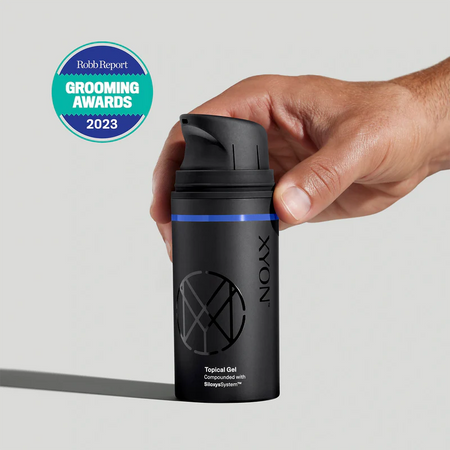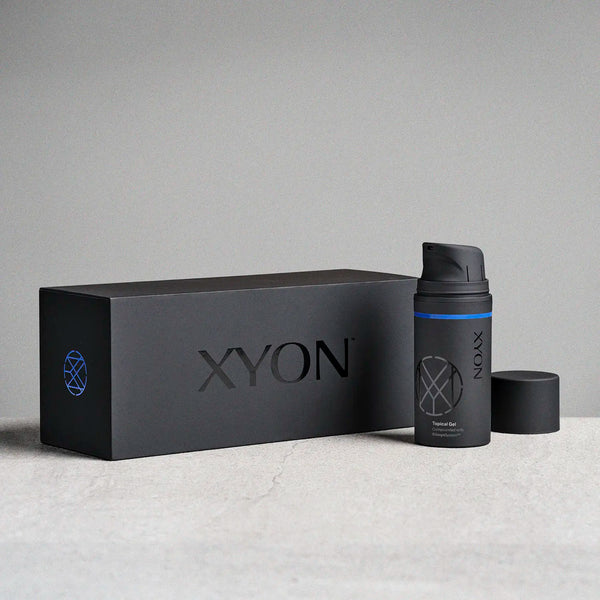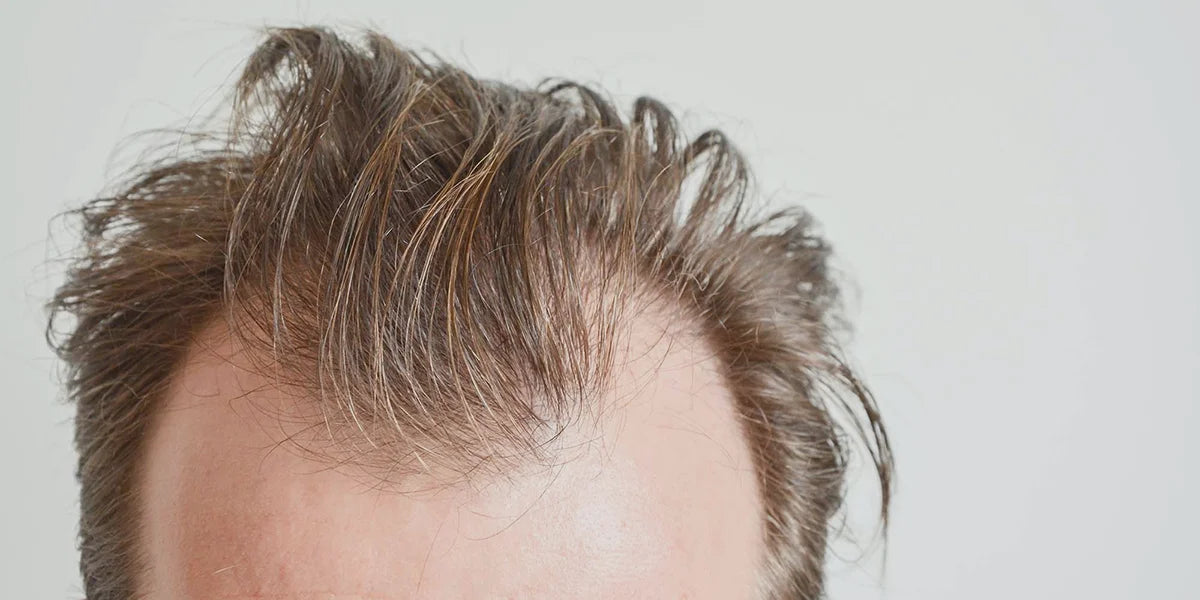Can I use finasteride on my receding hairline?
This is a great question. In most cases, the answer is yes. Remember that with androgenetic alopecia, hair loss tends to affect the vertex or crown (the top of the head) as well as the frontal scalp, commonly referred to as the hairline. This is different to female pattern hair loss which generally affects the middle hair part and may present as more diffuse thinning across the entire scalp.
Studies have shown that taking finasteride for hair loss works well for most men. But whether the frontal and vertex regions respond equally to finasteride is a little unclear. Androgenetic hair loss has the same primary trigger, elevated levels of dihydrotestosterone (DHT), regardless of the scalp area. If you’re noticing that some areas are thinning earlier than others, then genetics may have a role to play in the increased sensitivity of these hair follicles to DHT.
We know that in general, the vertex region of the scalp responds very well to finasteride. An early study of finasteride showed that the medication is effective at promoting hair growth at the top of the head when compared to placebo. These improvements were determined through hair counts and global photographic assessments. This effect was sustained over two years of treatment (Kaufman et al., 1998).
A parallel study conducted in 1999 focused on patients experiencing mostly frontal hair loss. The results showed that finasteride was also beneficial to hair growth in this area and able to slow down the progression of hair loss here (Leyden et al., 1999). More recent studies have cited a less dramatic response to finasteride in the frontal scalp (Rossi et al., 2011). But the consensus across studies and clinical practice is that finasteride treatment is better than no treatment at all for a thinning hairline and other areas of hair loss.
Did you know that Topical Finasteride, with SiloxysSystem™ Gel has been expertly formulated to focus finasteride treatment to specific areas of the scalp? Oral finasteride is also an option, but if you’ve just started to notice thinning, a topical formulation could be a great way to introduce hair loss treatment into your daily routine. Talk to a doctor about topical finasteride to see if it might be right for your hair loss.

When should I start finasteride to prevent frontal hair loss?
Treatment for frontal hair loss (and hair loss in general) should be started as soon as possible. Frontal hair loss can occur at any age and is one of the key areas affected by androgenetic alopecia. For some men, the hair line may also be less responsive to treatment, adding more weight to early prevention. One study found that finasteride treatment was capable of producing statistically significant hair regrowth across all regions of the scalp, but that younger patients were more likely to see improvement specifically in the frontal hairline (Olsen et al., 2012).
There are no clinical trials that focus specifically on early vs late treatment for thinning at the hairline, but there is evidence that supports higher treatment success with finasteride in mild to moderate cases of hair loss over more advanced cases. Recall that the severity of hair loss can be graded with the Hamilton Norwood scale. Lower Norwood scores correspond with milder or more moderate cases of hair loss.
One long term study of finasteride efficacy found that after 10 years of treatment, patients who originally scored between I-III on the Norwood scale saw more significant improvements based on global photographic assessment compared to patients who initially presented with scores of IV or above (Yanagisawa et al., 2019).
Our unique gel technology helps control absorption, keeping finasteride in the skin and out of the body.


Regrow your hairline with XYON's topical finasteride gel.
How to prevent a receding hairline
So what can you do? Practically, you can make sure that you’re optimizing your diet, managing stress and avoiding hair products or chemical procedures that may worsen hair loss. In addition, it’s also important to keep your scalp clean and healthy and get on top of treating any skin conditions in this area (e.g. dandruff).

Your doctor may also suggest using a hair loss medication such as minoxidil or finasteride as a means of slowing the progression of hair loss. This is especially important if you have a family history of balding. But bear in mind that finasteride works a bit differently compared to minoxidil when it comes to treating hair loss. Minoxidil has been shown to be effective in treating frontal hair loss, but it doesn’t address the root cause of thinning, DHT. For that, you’ll still need a 5-alpha reductase inhibitor like finasteride.
Can finasteride regrow hairline: Takeaway
A receding hairline is a common concern in men at risk of or experiencing pattern hair loss. It can also be more challenging to treat when compared to thinning at the top of the head if it becomes very advanced. Luckily, finasteride has been shown in clinical trials to be effective in treating hair loss in this region of the scalp. The key thing to remember is that treatment needs to be started early. If you’re noticing signs of thinning around your hairline, consider talking to your doctor to learn about your options for treatment.




